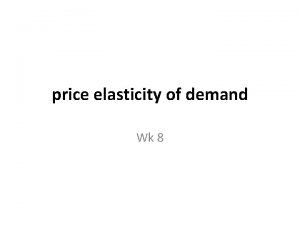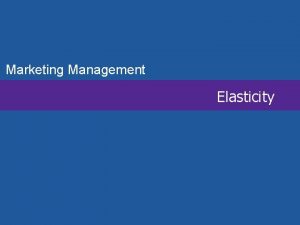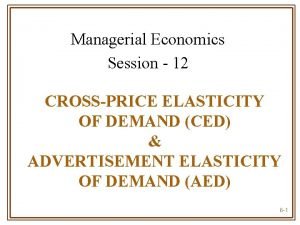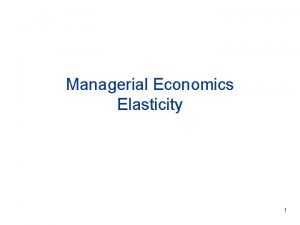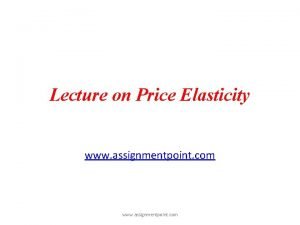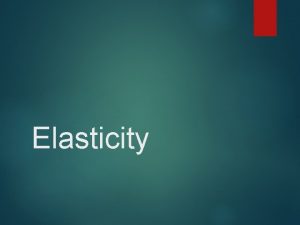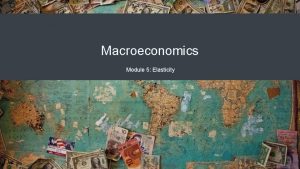Assignment Demand Analysis and Elasticity of Demand Analyse





- Slides: 5

Assignment- Demand Analysis and Elasticity of Demand • Analyse the demand of a group of consumers for a specific FMCG product. • Calculate the elasticity of demand based on the data collected. By Bhadresh Bhatt

Patanjali FMCG Products The company sells its products through 250 mega stores, 5, 000 Patanjali Chikitsalaya and Patanjali Arogya Kendra outlets, one million retail stores, modern trade and online retailers. Patanjali Sells, • Cow’s Ghee, • Beauty Products like Shampoo, Soaps, hair oil, • Ayurvedic Medicines, • Food Products like biscuits, juice, chips, wheat, cooking oil. Bhadresh Bhatt

FMCG Product by Patanjali Ayurved Baba Ramdev-founded Patanjali Ayurved Ltd. has become India’s second biggest consumer goods maker behind Hindustan Unilever Ltd. riding on the success of its lower-priced ayurvedic products. The company reported higher sales than rivals like ITC Ltd. (FMCG segment) and Godrej Consumer Products Ltd. in the year ended March. The growth was driven by key products like cow’s ghee, toothpaste and herbal soaps and shampoos. The company expanded into newer categories, taking its yearly revenue to Rs 10, 561 crore. Patanjali has positioned itself in the entire FMCG space as “very Indian and ruraloriented”.

Elasticity on Demand • Cow’s Ghee of Patanjali Ayurveda Year 2015 selling price – 480 Rs. /Ltr. Year 2015 Demand – 20 lacs Ltr Year 2016 selling Price-530 Rs. /Ltr Year 2016 Demand – 15 lacs Ltr Price elasticity of demand = % change in Demand / % change in price • The price increases from 480 Rs. to 530 Rs. • Therefore % change = (530 -480)/ 480 = 0. 1 = 10% (0. 1 *100) • Quantity fell by (20 -15)/15 = – 0. 25 (25%) • Therefore PED =- 25 / 10 • Therefore PED = -25/10=-2. 5 • Therefore Demand is elastic. Elastic demand occurs when % change in Quantity is greater than % change in price; when PED >1 Bhadresh Bhatt

Elasticity on Demand • Tooth Paste of Patanjali Ayurveda Year 2015 selling price – 75 Rs. /200 gm Year 2015 Demand – 35 lacs Year 2016 selling Price-70 Rs. /200 gm Year 2016 Demand – 40 lacs Price elasticity of demand = % change in Demand / % change in price • The price increases from 75 Rs. to 70 Rs. • Therefore % change = (75 -70)/70 = 0. 07 = 7. 1% (0. 07 *100) • Quantity fell by (35 -40)/35 = – 0. 14 (14%) • Therefore PED =-14 / 7. 1 • Therefore PED = -14/7. 1=-1. 97 • Therefore Demand is elastic. Elastic demand occurs when % change in Quantity is greater than % change in price; when PED >1 Bhadresh Bhatt
